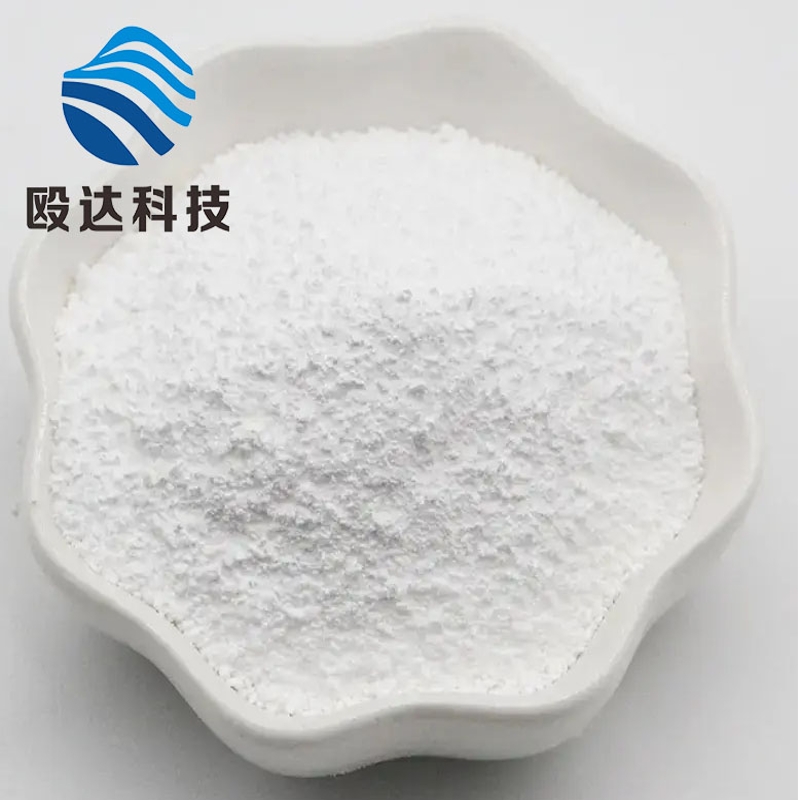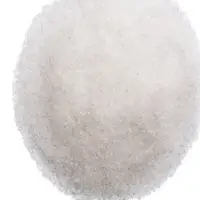-
Categories
-
Pharmaceutical Intermediates
-
Active Pharmaceutical Ingredients
-
Food Additives
- Industrial Coatings
- Agrochemicals
- Dyes and Pigments
- Surfactant
- Flavors and Fragrances
- Chemical Reagents
- Catalyst and Auxiliary
- Natural Products
- Inorganic Chemistry
-
Organic Chemistry
-
Biochemical Engineering
- Analytical Chemistry
- Cosmetic Ingredient
-
Pharmaceutical Intermediates
Promotion
ECHEMI Mall
Wholesale
Weekly Price
Exhibition
News
-
Trade Service
Introduction Non-alcoholic fatty liver disease (NAFLD) is currently the most common chronic liver disease, affecting at least a quarter of the adult population worldwide.
Non-alcoholic steatohepatitis (NASH) is an advanced form of NAFLD, which is associated with persistent liver cell damage, which can lead to fibrosis, and even progress to cirrhosis and end-stage liver disease.
NASH has become one of the important causes of liver cirrhosis and hepatocellular carcinoma.
Currently, more than 50 therapeutic drugs are in the clinical development stage.
This article reviews current and research NASH drugs (including NASH drugs in Phase 2 and Phase 3 development), and discusses how to select target treatment populations.
Summary: NASH treatment drugs currently and under study, regardless of the severity of NAFLD, should encourage patients to maintain a healthy diet and exercise regularly.
Among overweight and obese people, 10% weight loss is usually used as a target for improving NASH and reversing liver fibrosis, but many patients with lighter weight loss can still have improvement in NAFLD.
In other words, not everyone can change their own lifestyles.
The long-term compliance of this method is difficult to maintain, and some patients need to treat NASH with drugs.
The American Association for the Study of Liver Diseases (AASLD) NAFLD Practice Guidelines statement recommends the use of vitamin E off-label in non-cirrhotic and non-diabetic patients with NASH confirmed by biopsy, and recommends the use of pioglitazone in the treatment of diabetic patients with NASH confirmed by biopsy.
This is a recommendation based on published NASH randomized controlled trial data.
Although there are some retrospective data supporting the use of the former to reduce clinical events, there is no prospective randomized trial to confirm its impact on liver-related morbidity or mortality.
The LEAN trial tested the GLP-1 receptor agonist liraglutide, and the results showed that 39% of patients in the liraglutide group achieved NASH regression without aggravation of fibrosis, compared with 9% in the placebo group.
Semaglutide is a new type of GLP-1 receptor agonist.
Compared with liraglutide, it has a more significant weight loss effect.
Oral preparations are currently under development and may be better accepted by patients.
Recently, Newsome and colleagues conducted a phase 2 trial in patients with NASH-related fibrosis.
The results showed that 59% of patients treated with 0.
4 mg semaglutide per day achieved NASH regression at 72 weeks, compared with 17% in the placebo group.
.
In the phase 3 REGENERATE study, obeticholic acid [a potent farnesoid derivative X receptor (FXR) agonist] increased the rate of fibrosis improvement at 18 months, and NASH did not worsen (23.
1% of patients received obeticholic acid 25 mg daily treatment, 17.
6% of patients received obeticholic acid 10 mg daily, and 11.
9% of patients received placebo treatment).
There was no statistical difference in the regression rate of NASH among the three groups.
However, about half of the patients in the 25 mg daily treatment group developed symptoms of itching, which was associated with elevated levels of low-density lipoprotein cholesterol.
Therefore, before the U.
S.
Food and Drug Administration makes a final judgment, it is necessary to further confirm and/or clarify the clinical outcome data.
In the Phase 3 STELLAR study, the apoptosis signal-regulated kinase-1 (ASK1) antagonist selonsertib did not show any effect on NASH or fibrosis.
Other drugs in the phase 3 development stage include elafibranor [peroxisome proliferative activated receptor (PPAR)-α/δ agonist, the main result recently announced is negative], cenicriviroc (CC chemokine receptor 2 and 5 Inhibitors) and resmetirom (MGL3196, thyroid hormone receptor-β agonist).
In addition, there are many drugs in the Phase 2 development stage (Table 1).
Table 1 NASH drugs in Phase 2 and Phase 3 development can be reasonably expected that one or several drugs may be used to treat NASH in the near future.
How to choose the target treatment population? All NAFLD patients who are overweight or obese will benefit from lifestyle intervention.
The focus of lifestyle intervention is to cause calorie deficiency through dietary restriction and increased exercise.
Therefore, lifestyle intervention is the cornerstone of NAFLD management at all stages.
Before establishing the routine clinical application of NASH drug therapy, three basic principles should be met: 1.
The drug has clinical efficacy to improve liver-related outcomes; 2.
The overall safety of the drug has a favorable risk-benefit ratio; 3.
Compared with the current Compared with the standard treatment, the cost-effectiveness of the drug treatment method is determined.
Considering the higher risk of liver-related events in patients with advanced fibrosis, NASH subjects with ≥2 stage fibrosis, especially those with bridging fibrosis and cirrhosis, have higher cost-effectiveness and social benefits.
Therefore, it is best to determine the NASH drug treatment population based on fibrosis assessment, and patients with bridging fibrosis and liver cirrhosis need treatment most urgently.
Literature index: Rowe IA, Wai-Sun Wong V, Loomba R.
Treatment candidacy for pharmacologic therapies for NASH[J].
Clin Gastroenterol Hepatol.
2021 Mar 9;S1542-3565(21)00228-7.
Contribution email: tougao@medlive .
cn
Non-alcoholic steatohepatitis (NASH) is an advanced form of NAFLD, which is associated with persistent liver cell damage, which can lead to fibrosis, and even progress to cirrhosis and end-stage liver disease.
NASH has become one of the important causes of liver cirrhosis and hepatocellular carcinoma.
Currently, more than 50 therapeutic drugs are in the clinical development stage.
This article reviews current and research NASH drugs (including NASH drugs in Phase 2 and Phase 3 development), and discusses how to select target treatment populations.
Summary: NASH treatment drugs currently and under study, regardless of the severity of NAFLD, should encourage patients to maintain a healthy diet and exercise regularly.
Among overweight and obese people, 10% weight loss is usually used as a target for improving NASH and reversing liver fibrosis, but many patients with lighter weight loss can still have improvement in NAFLD.
In other words, not everyone can change their own lifestyles.
The long-term compliance of this method is difficult to maintain, and some patients need to treat NASH with drugs.
The American Association for the Study of Liver Diseases (AASLD) NAFLD Practice Guidelines statement recommends the use of vitamin E off-label in non-cirrhotic and non-diabetic patients with NASH confirmed by biopsy, and recommends the use of pioglitazone in the treatment of diabetic patients with NASH confirmed by biopsy.
This is a recommendation based on published NASH randomized controlled trial data.
Although there are some retrospective data supporting the use of the former to reduce clinical events, there is no prospective randomized trial to confirm its impact on liver-related morbidity or mortality.
The LEAN trial tested the GLP-1 receptor agonist liraglutide, and the results showed that 39% of patients in the liraglutide group achieved NASH regression without aggravation of fibrosis, compared with 9% in the placebo group.
Semaglutide is a new type of GLP-1 receptor agonist.
Compared with liraglutide, it has a more significant weight loss effect.
Oral preparations are currently under development and may be better accepted by patients.
Recently, Newsome and colleagues conducted a phase 2 trial in patients with NASH-related fibrosis.
The results showed that 59% of patients treated with 0.
4 mg semaglutide per day achieved NASH regression at 72 weeks, compared with 17% in the placebo group.
.
In the phase 3 REGENERATE study, obeticholic acid [a potent farnesoid derivative X receptor (FXR) agonist] increased the rate of fibrosis improvement at 18 months, and NASH did not worsen (23.
1% of patients received obeticholic acid 25 mg daily treatment, 17.
6% of patients received obeticholic acid 10 mg daily, and 11.
9% of patients received placebo treatment).
There was no statistical difference in the regression rate of NASH among the three groups.
However, about half of the patients in the 25 mg daily treatment group developed symptoms of itching, which was associated with elevated levels of low-density lipoprotein cholesterol.
Therefore, before the U.
S.
Food and Drug Administration makes a final judgment, it is necessary to further confirm and/or clarify the clinical outcome data.
In the Phase 3 STELLAR study, the apoptosis signal-regulated kinase-1 (ASK1) antagonist selonsertib did not show any effect on NASH or fibrosis.
Other drugs in the phase 3 development stage include elafibranor [peroxisome proliferative activated receptor (PPAR)-α/δ agonist, the main result recently announced is negative], cenicriviroc (CC chemokine receptor 2 and 5 Inhibitors) and resmetirom (MGL3196, thyroid hormone receptor-β agonist).
In addition, there are many drugs in the Phase 2 development stage (Table 1).
Table 1 NASH drugs in Phase 2 and Phase 3 development can be reasonably expected that one or several drugs may be used to treat NASH in the near future.
How to choose the target treatment population? All NAFLD patients who are overweight or obese will benefit from lifestyle intervention.
The focus of lifestyle intervention is to cause calorie deficiency through dietary restriction and increased exercise.
Therefore, lifestyle intervention is the cornerstone of NAFLD management at all stages.
Before establishing the routine clinical application of NASH drug therapy, three basic principles should be met: 1.
The drug has clinical efficacy to improve liver-related outcomes; 2.
The overall safety of the drug has a favorable risk-benefit ratio; 3.
Compared with the current Compared with the standard treatment, the cost-effectiveness of the drug treatment method is determined.
Considering the higher risk of liver-related events in patients with advanced fibrosis, NASH subjects with ≥2 stage fibrosis, especially those with bridging fibrosis and cirrhosis, have higher cost-effectiveness and social benefits.
Therefore, it is best to determine the NASH drug treatment population based on fibrosis assessment, and patients with bridging fibrosis and liver cirrhosis need treatment most urgently.
Literature index: Rowe IA, Wai-Sun Wong V, Loomba R.
Treatment candidacy for pharmacologic therapies for NASH[J].
Clin Gastroenterol Hepatol.
2021 Mar 9;S1542-3565(21)00228-7.
Contribution email: tougao@medlive .
cn







